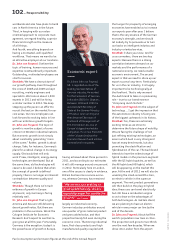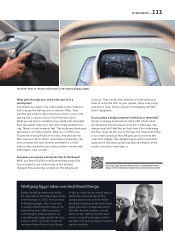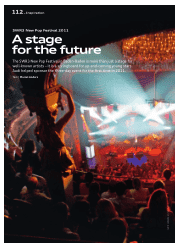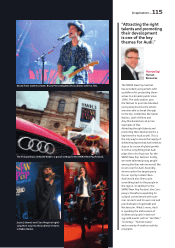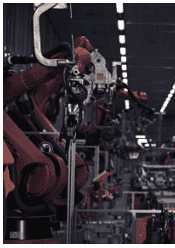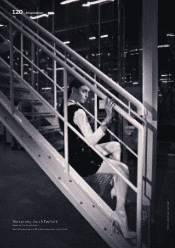Audi 2011 Annual Report Download - page 113
Download and view the complete annual report
Please find page 113 of the 2011 Audi annual report below. You can navigate through the pages in the report by either clicking on the pages listed below, or by using the keyword search tool below to find specific information within the annual report.
110
_ Inspiration
It looks like a simple wooden box from the outside:
What’s behind the Audi e-fi les?
We are forever asking ourselves what the interiors of our
vehicles could look like in the future. A few years ago we
compiled relevant studies for the A, Q and R families.
Because of course they were top secret, we called them
x-fi les. In a second phase we then focused on our e-tron
vehicles, hence the name e-fi les. The objective is to create
an image of the future. To redefi ne the interior in an
Audi world, taking the electric drive system into account.
The designs we devised on paper and on the PC were
then translated into a model so we designers – and the
Board members who ultimately take the fi nal product
decision – can grasp them in both senses of the word.
How far into the future do you go with these models?
Not too far. The idea is not to create sci-fi . When we launch
a project for a volume-produced car, we have fi ve years’ lead
time until the start of production. In other words, the fi les
are about seven to eight years ahead of reality.
What is new about the interior in the e-fi les?
Since electric cars no longer have a combustion engine
under the hood, the structure of the vehicle can be
diff erent. Electric motors are smaller and the batteries do
not necessarily have to be located in the space formerly
occupied by the engine. So I can place those elements that
are currently directly behind the dashboard there instead.
Our guiding philosophy for the interior is to create a sense
of lightness and introduce the new feeling associated
with electric driving. In addition, a new idea also has to
benefi t the customer. I perceive the entire interior as being
airy and spacious. There’s almost as much space as in a
London cab. And the center console can be lowered so that
I can get out quickly on the passenger side if someone
has parked too close to me in the city center. That’s the
advantage of no longer having a center tunnel, as electric
cars do not need a transmission. Another plus is that
I save a lot of weight, namely the 300 kilos that such a
transmission weighs.
Does the fact that driving an electric car feels diff erent
aff ect the design of the interior?
For us designers, the fact that you hardly hear an electric
motor almost amounts to a philosophical issue. After all,
the act of starting the motor and driving off is a bit like
turning on your coff ee machine. Relatively unemotional.
With a gasoline or diesel-powered car, you turn the key or
press the start-stop button and ignite a combustion engine.
And you can feel it, the pistons move; and you of course
hear it, as there are countless explosions in the combustion
chambers. There’s none of that in an electric car. You turn
it on and ask yourself: Is it on? Or not? We’ve solved this by
placing the user controls horizontally on the dashboard. As
soon as I press the start-stop button the user console pops
up and a strip of light softly illuminates the cockpit area.
This LED strip runs from the driver’s door over the dashboard
to the door on the passenger’s side. This brings the interior
to life and indicates to the driver that the system has been
activated. Like that little red light on the coff ee machine.
What are the ingredients for an interior that car buyers
will rave about?
It is the sum of many details. The key factors are the package,
the ergonomics and the user concept. Not only the visuals
are very important, the acoustics are too. How protected do
I feel inside my car? Many customers fi nd it pleasant if the
acoustics are dampened inside the car. Feedback from the
control elements is also very important. If a dial sounds
like the lock on a safe, psychologically it fi lls you with much
more confi dence than if it sounds like a plastic toy. And
then there’s the whole olfactory side to things. What do you
smell when you get into the car? At Audi there’s a special
nose team that deals exclusively with this aspect.
PHOTOS | SJOERD TEN KATE/SCHIERKE (3); AUDI AG
The seating box as an illusion of the interior (left). Futuristic and yet ergonomic – the innovative interior (center).




